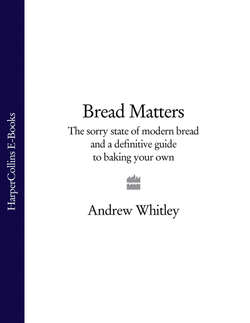Читать книгу Bread Matters: The sorry state of modern bread and a definitive guide to baking your own - Andrew Whitley - Страница 17
Wheat
ОглавлениеAt the end of the Second World War, explosives manufacturers experienced a distinct decline in sales. If not exactly beating bombs into ploughshares, they found a ready outlet for their chemicals in the intensive agriculture that was seen as the only way to feed rapidly growing urban populations. Grain varieties were bred to respond to heavy applications of soluble nitrogen, potash and phosphorus fertilisers. But such a regime produces flabby straw that falls over in wind or rain. So wheats with short straw were developed.
Once hooked on soluble chemicals, the new varieties showed signs of succumbing more than before to fungal and pest attack. So new strains were bred for built-in resistance. Shorter stem length means less canopy to suppress weeds, meaning the new varieties also had to be able to thrive in the presence of herbicides. The millers wanted their say, too, so the breeding programme was tweaked to produce wheats with proteins more suitable for bread baking. And each year, yields had to go on rising.
Yield, short straw, disease resistance, milling quality – the plant breeders have obliged. They have done so, to date, without recourse to GM technology, though that is in the wings.
What is striking in all of this – for those of us who think that farming has something to do with feeding people to keep them in good health – is that nutritional quality doesn’t get a look in. No one seems to have asked whether, as variety succeeded variety with bewildering speed, wheat was getting better or worse to eat, more or less nutritious, more or less digestible. The most sophisticated science is used to analyse ‘quality’ differences between contenders for the UK National List of cereal varieties subject to Plant Breeders’ Rights. Yet, cereal scientists, along with the big millers and bakers, act as though, nutritionally, all wheat varieties are much the same. Advances in the purely functional properties of wheat have come at the price of reductions in its nutritional quality. The precursors of modern bread wheats – einkorn, emmer and spelt – all contain more nutrients than their commercial successors. Research at the International Maize and Wheat Improvement Center in Mexico revealed that the best traditional wheat varieties had about twice the iron and zinc of popular modern varieties, and their wild relatives had another half as much again7. In Europe, the French National Institute for Agricultural Research has shown that the mineral content of current French wheats is 30-40 per cent below that of older varieties8.
